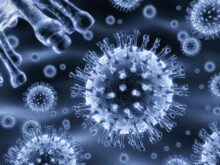Read about Antineoplastons Brain Cancer Treatment.
Antineoplastons are a group of naturally-occurring peptides and amino acid derivatives which control tumor growth, and have been proven in clinical studies on a number of advanced cancer cases to be highly effective and non-toxic, relative to chemotherapy.
Antineoplastons therapy by Burzynski
Antineoplastons therapy was developed by Dr. S. R. Burzynski, who proposed the use of antineoplastons as a possible cancer treatment in 1976.Antineoplastons therapy is an alternative therapy for brain cancer treatment. Antineoplastons are chemical compounds that are found normally in urine and blood. For use in medical research, they can be made from chemicals in a laboratory.
Antineoplastons therapy effect on body
Burzynski claimed that cancer patients had lower concentrations of these peptides, amino acids, and other organic compounds in their blood. He theorized that this limited the body’s ability to effectively fight cancer and proposed introducing antineoplastons to the body in order to boost levels.
When the body does not have enough antineoplastons, cells that begin to develop abnormally are not corrected, and tumors form and grow. It was also suggested that antineoplastons therapy supplies the body with the substances needed to correct the abnormal development of the cell and allow it to develop normally or to die a natural cell death, while healthy cells are not affected.

Mode of Administration of Antineoplastons
Antineoplastons have been given in different ways. Today, most antineoplastons are given
- By mouth (orally)
- By injection (shot)
Dosing of Antineoplastons
Adults (18 years and older)
Various doses of antineoplastons have been used in preliminary studies. Safety and efficacy are not proven for any specific dose or use. Doses of antineoplastons A10 used by mouth in studies range from 10 to 40 grams or 100 to 288 milligrams per kilogram of body weight per day.
Duration of use has varied. Antineoplaston AS2-1 has been studied at doses from 12 to 30 grams daily or 97 to 130 milligrams per kilogram of body weight per day. Antineoplastons have also been studied when applied to the skin, injected through the veins (intravenous) and injected into muscles (intramuscular).
Children (younger than 18 years)
There is insufficient available data to safely recommend the use of antineoplastons in children.
Antineoplastons and FDA
Research on these compounds has not supported the theory that they are an effective cancer treatment and they have not been approved by the Food and Drug Administration (FDA) for the treatment of any disease. In addition, organizations such as the American Cancer Society strongly recommend against pursuing therapy with antineoplastons.
Because antineoplastons are not approved for cancer therapy, they can only be offered in the context of a clinical trial. Patients are eligible for a clinical trial if another line of cancer therapy has failed. They are obliged to pay for the antineoplastons and doctor’s visits needed to administer the compounds and monitor the patient. Insurance companies typically do not cover this treatment because it is unproved and experimental.
Clinical Trials of Antineoplastons
Clinical trials are under way on the use of Antineoplastons for brain tumors treatment.
Phase I trials are the first step in testing a new treatment in people. In these studies, researchers test to see what dose is safe, how the treatment should be given (such as by mouth or by injection) and how often it should be given. In the phase I trials of antineoplastons, side effects were usually mild and did not last long.
The most severe harmful side effects occurred in a phase II trial. Phase II cancer trials study how a treatment works against certain types of cancer and how it affects the body. A phase II trial of antineoplastons A10 and AS2-1 in brain tumor patients reported severe nervous system side effects including sleepiness, confusion, seizures, and swelling near the brain.
To date, no phase III randomized controlled trials of antineoplastons as treatments for cancer have been conducted.
Side Effects of Antineoplastons
In trials antineoplastons have been found to cause some side effects.
The following mild side effects have been noted:
- Anemia (lower than normal number of red blood cells)
- High blood pressure
- Dizziness
- Gas
- Fever and chills
- Feeling very tired or fatigue
- Headaches
- Weakness
- Abnormal levels of calcium in the blood
- Dry or itchy skin rash
- Nausea
- Vomiting
- Numbness
- Irregular heartbeat
- Swelling caused by excess fluid in body tissues or edema
- Swelling, pain, or stiffness in small joints
Serious nervous system side effects included the following
- Extreme sleepiness
- Confusion
- Seizures
- Anxiety
- Swelling near the brain.
Efficacy of Antineoplastons
If Antineoplaston therapy is effective, we should have scientific studies showing what percentage of patients treated have survived and for how long, as well as evidence showing how the therapy compares to conventional cancer treatment.
Until there would have credible scientific evidence describing exactly what antineoplastons are, how they act in the body, and what realistic expectations of treatment with them might be, there is no reason for any cancer patient to consider this route.
Cost of Antineoplastons therapy
According to the American Cancer Society (ACS) the cost of antineoplastons therapy ranges from $7,000 to $9,500 per month or more, depending on the type of treatment, number of consultations, and the need for surgery to implant a catheter for drug delivery. Available information suggests that health insurance plans often do not reimburse costs linked to this treatment, the ACS reported.
 Health & Care Information
Health & Care Information 

